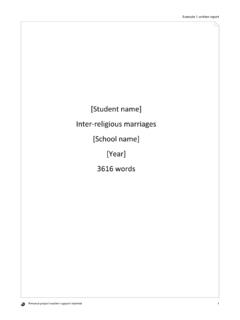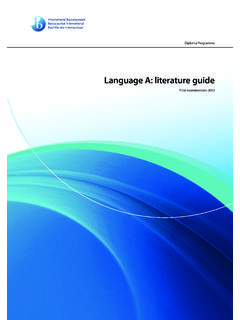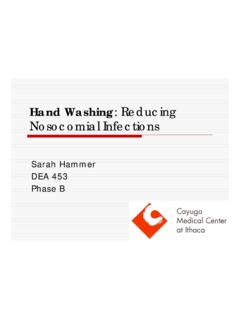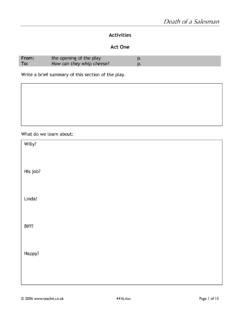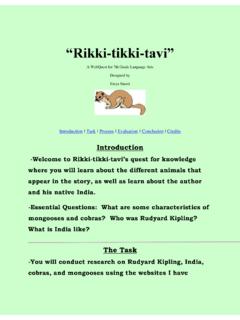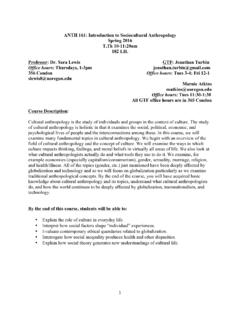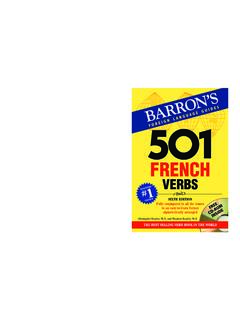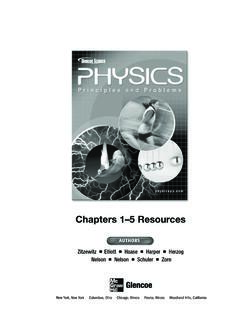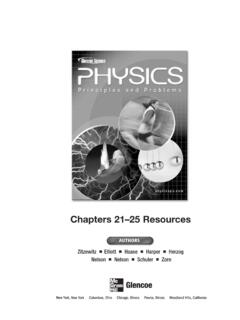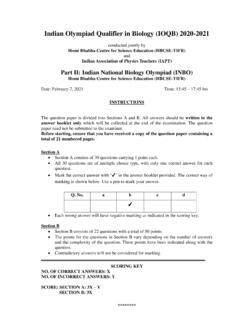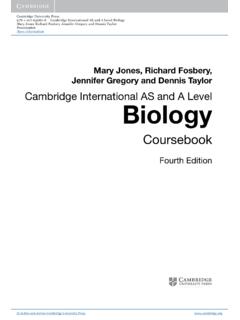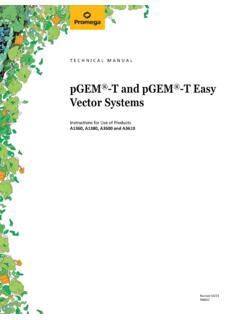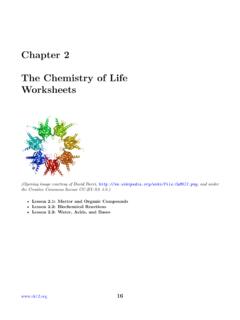Transcription of HUMAN BODY SYSTEMS EXAM (S7L2) Multiple Choice …
1 HUMAN BODY SYSTEMS EXAM (S7L2) Multiple Choice Directions: Select the best answer for each of the following questions. 1. Teeth are part of the skeletal system, but they are also part of the digestive system. What role do teeth play in the digestive system? A. They begin mechanical digestion. B. They release enzymes into the saliva for chemical digestion. C. They begin chemical digestion. D. They are shaped for grinding, mashing, and tearing food of the following statements describes the function of veins?
2 A. Veins allow gas exchange to occur between cells and blood. B. Veins carry blood from the heart to the lungs. C. Veins carry blood away from the heart to the body. D. Veins carry blood to the heart back from the rest of the body. of the following is the main function of the large intestine? A. storing bile B. absorbing nutrients from chyme C. compacting and eliminating waste materials D. making hormones that regulate blood sugar . 4. What is the function of the testes in the male reproductive system?
3 A. The testes produce sperm and testosterone. B. The testes regulate the development of female characteristics. C. The testes transfer sperm to the female s body. D. The testes transfer sperm to the urethra. 5. Identify the feedback mechanism that maintains your body temperature when your surroundings are very hot. brain sends a message to the skin. The muscles in the skin contract, or shiver, to cool the body. muscles in the skin contract, which sends a message to the brain that you feel hot. The brain sends a message to the skin s heat receptors.
4 Receptors in the skin send a message to the brain. The brain sends a response to start sweating, which cools the body. D. The skin starts sweating. The sweat sends a message to the brain, which sends a response to stop sweating. 6. Which of the following statements about muscles and the muscular system is true? muscle action is voluntary, or able to be consciously controlled. three types of muscle tissue are skeletal muscle, smooth muscle, and involuntary muscle. always work independently to move parts of the body.
5 D. Smooth muscle moves food through the digestive system. 7. Which of the following correctly lists parts of the reproductive SYSTEMS of males and females? A. Male: penis, fallopian tubes, prostate gland Female: ovaries, uterus, vagina B. Male: testes, epididymis, penis Female: vas deferens, vagina, fallopian tubes C. Male: prostate gland, penis, testes Female: uterus, vagina, fallopian tubes D. Male: vas deferens, cervix, penis Female: vagina, epididymis, ovaries Use the diagram to the right to answer question 8.
6 Number indicates the organ that absorbs most of the nutrients in food? A. 1 B. 2 C. 3 D. 4 ( ) Use the diagram below to answer questions 9-10. 9. Daneeka purchased a snack at school and found the above Nutrition Facts label on the back of the package. How much fat will Daneeka take in if she eats this entire package of food? A. 2 g B. 3 g C. 6 g D. 18 g 10. Fish is an example of A. carbohydrate B. protein C. fat D. None of the above 11. Bread is an example of a A. carbohydrate B.
7 Protein C. fat D. None of the above 12. Proteins play a role in most cell processes. What do cells make proteins from? A. lipids B. amino acids C. nucleotides D. carbohydrates 13. Which of the following statements best describes carbohydrates? A. Carbohydrates are the body s main source of energy. B. Carbohydrates assist in blood clotting. C. Carbohydrates build and repair the body. D. Carbohydrates make up about 70% of the HUMAN body. ( ) 14. Which of the following is NOT an organ of the skeletal system?
8 A. bone B. cartilage C. muscle D. none of the above 15. The brain is an organ. What kind of tissue makes up most of the brain? A. muscle tissue B. nervous tissue C. epithelial tissue D. connective tissue is the relationship between tissues and organs? A. Organs are made up of tissues. B. Organs are enclosed by tissues. C. Tissues contain one or more organs. D. Organs develop into tissues. 17. Which of the following statements describe how tissues, organs, and organ SYSTEMS are related?
9 A. Organs form tissues, which form organ SYSTEMS . B. Organ SYSTEMS form organs, which form tissues. C. Tissues form organs, which form organ SYSTEMS . D. None of the above two organs make up the central nervous system? A. somatic nerves and autonomic nerves B. cerebrum and cerebellum C. neurons and receptors D. brain and spinal cord ( ) of the following best describes how an organ system serves the needs of cells? A. The cardiovascular system pumps blood, which carries nutrients and oxygen, to cells in the body.
10 B. The muscular system works with the skeletal system to move the body. C. The integumentary system absorbs oxygen that is carried to cells. D. The small intestine absorbs nutrients that are used in cell functions. 20. Which type of blood vessel allows for the exchange of gases between the blood and body cells? B. capillaries C. veins D. ventricles 21. What would happen if HUMAN blood did not contain red blood cells? blood would not be able to carry oxygen. B. The blood would not be able to clot.
